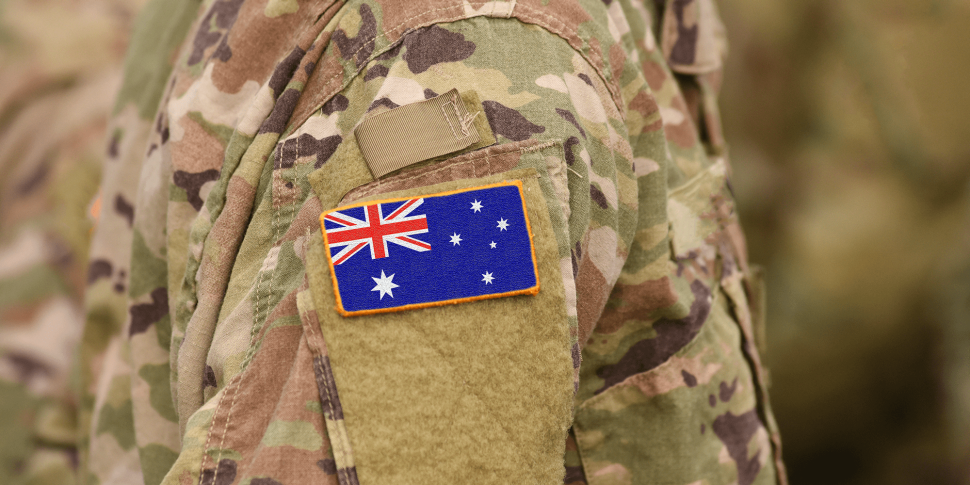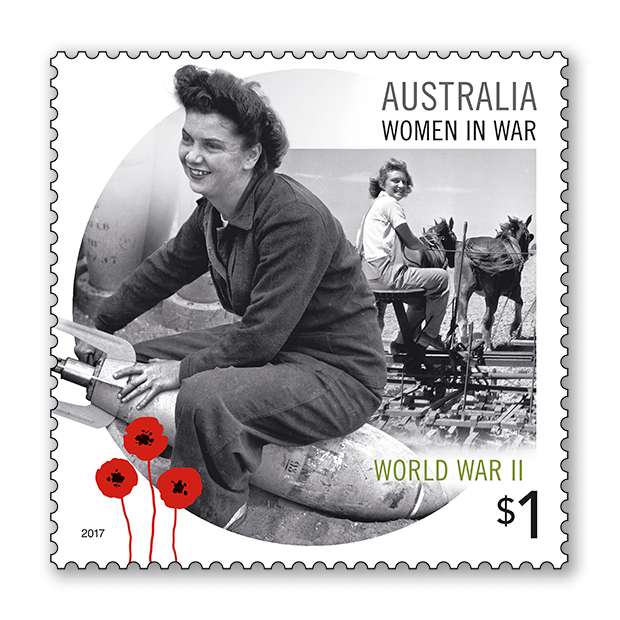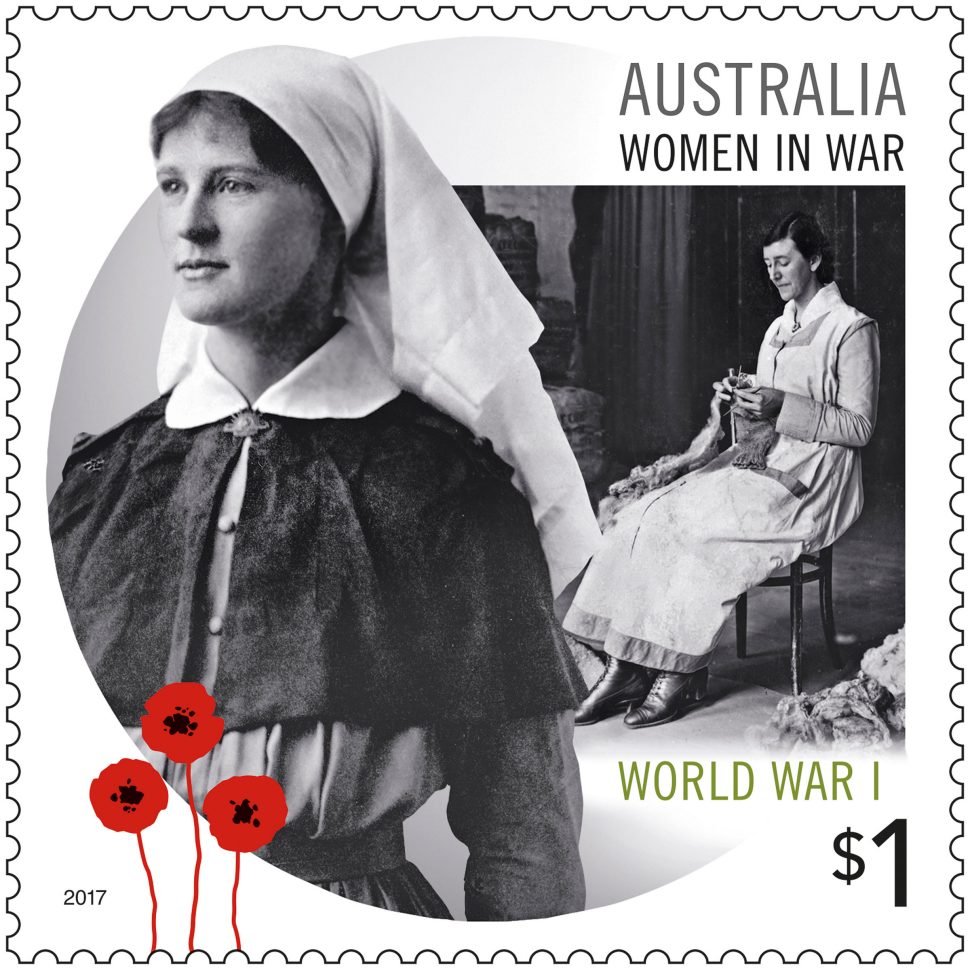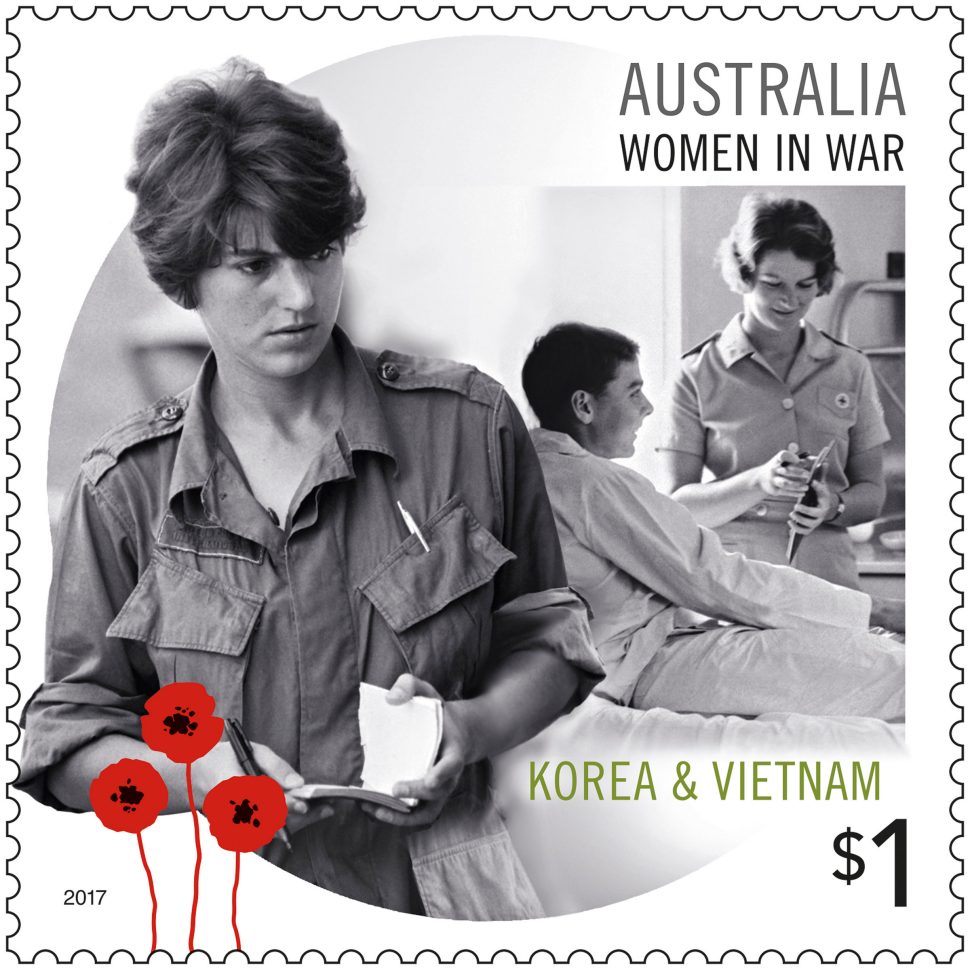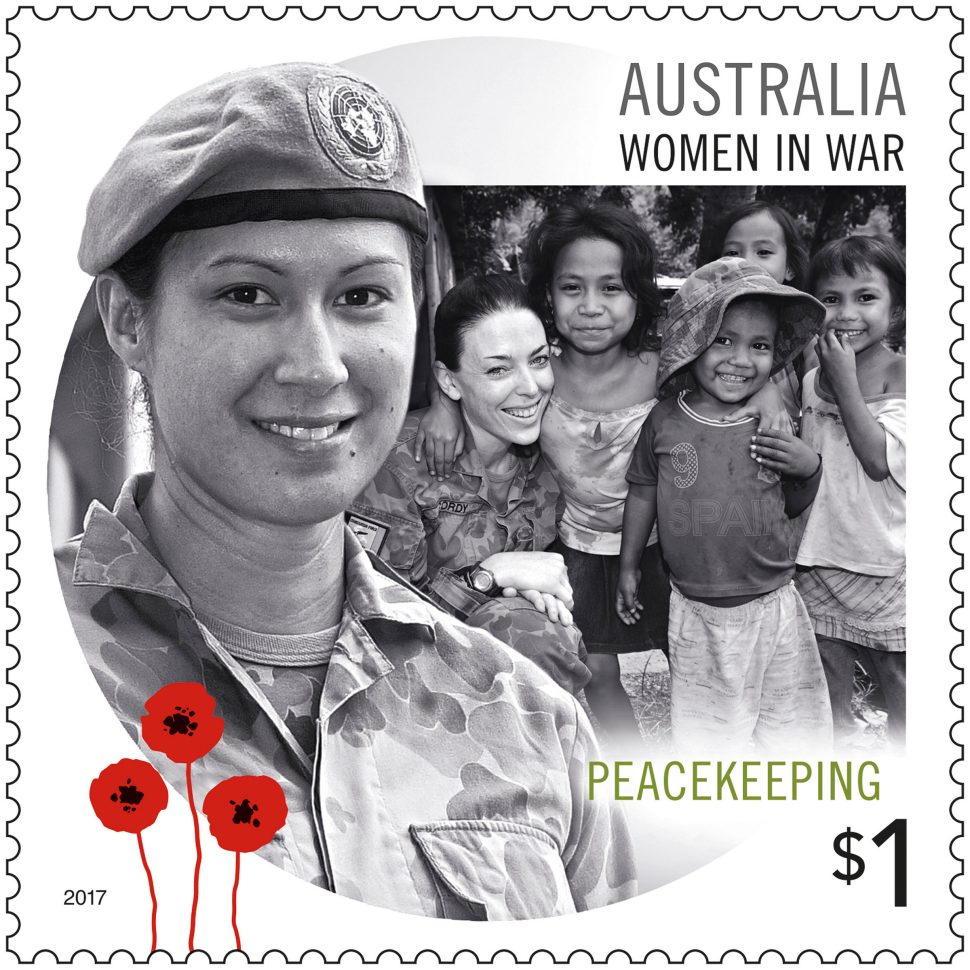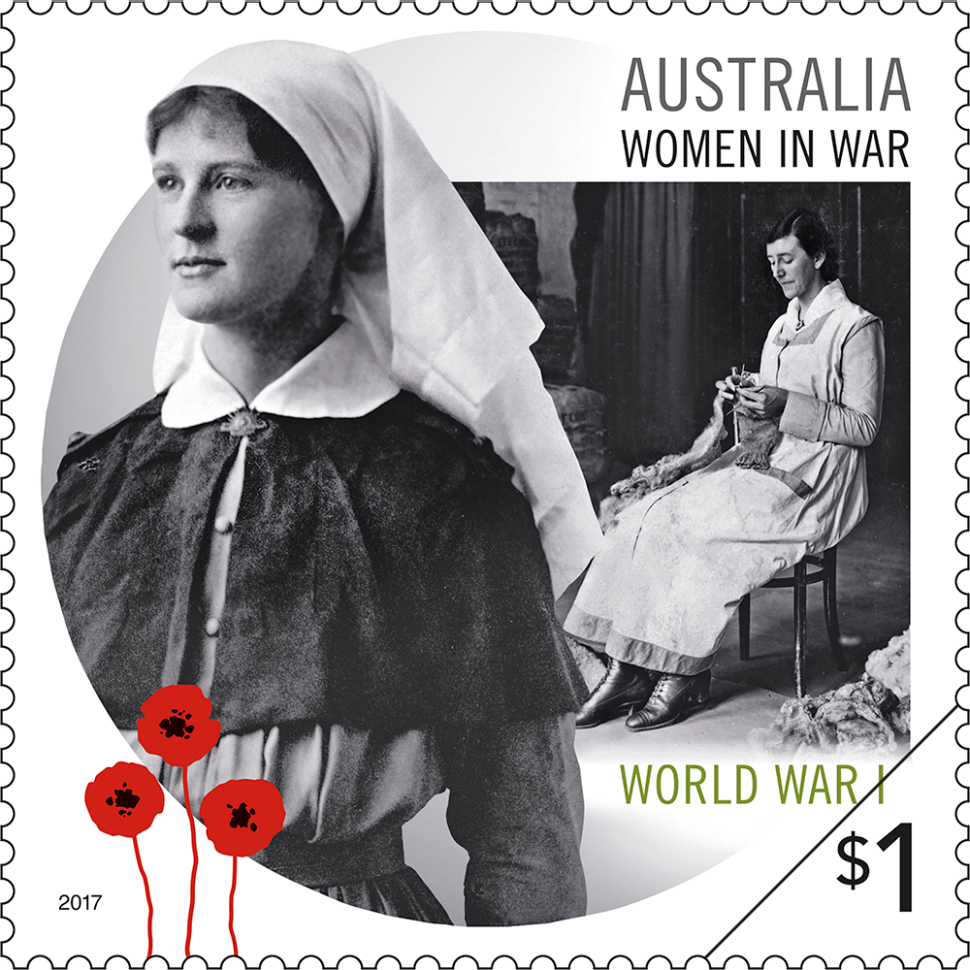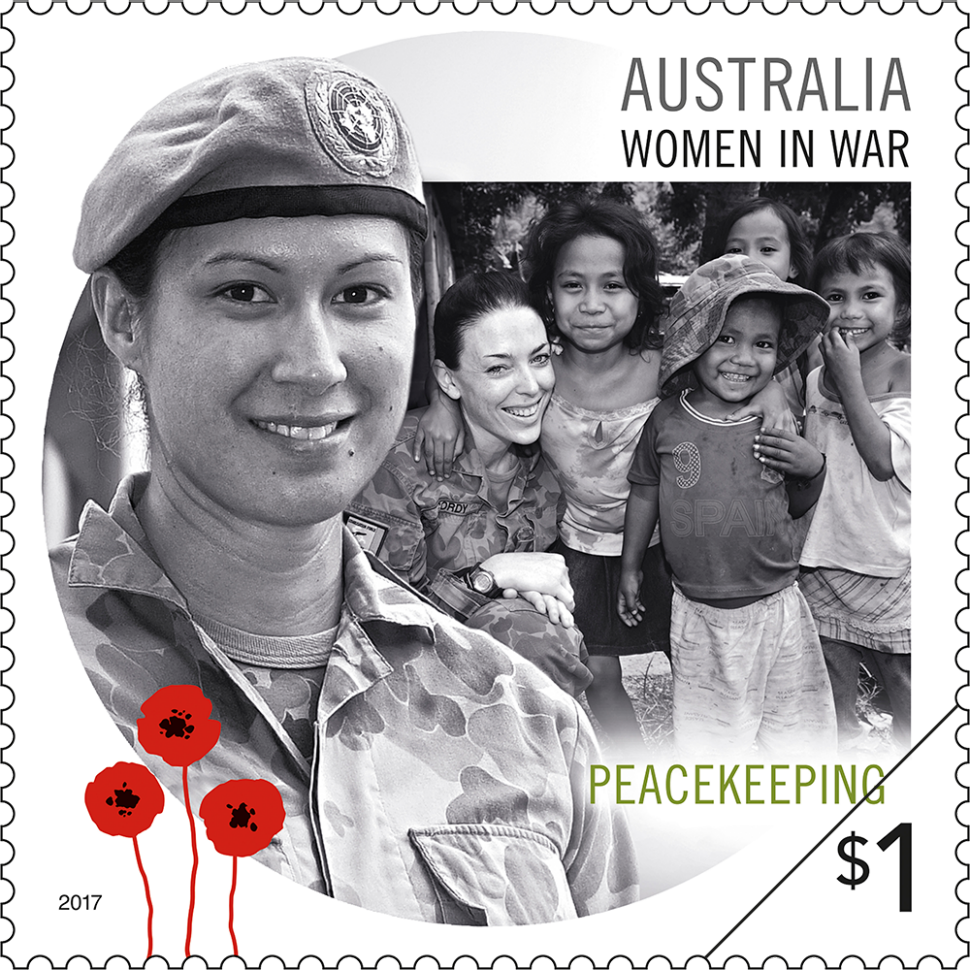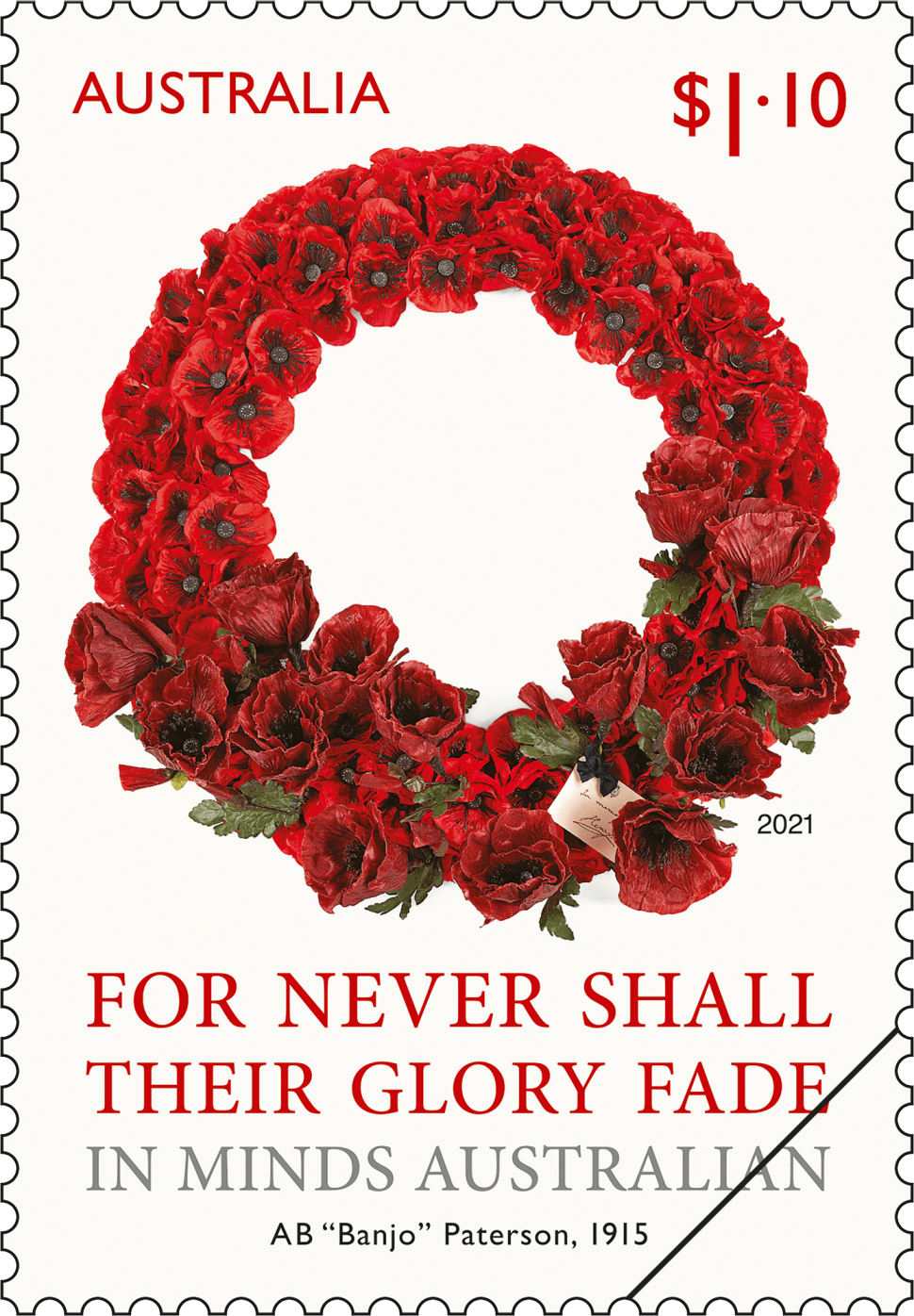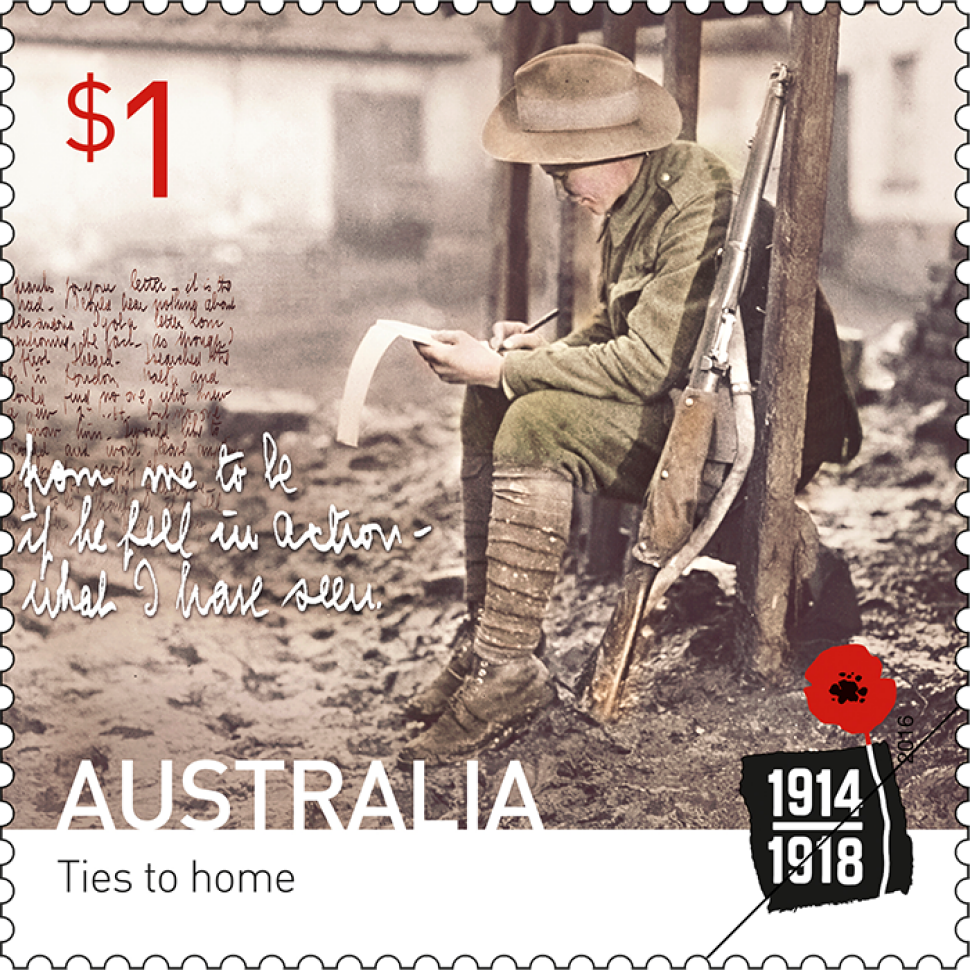This issue, the fourth in a series commemorating a century of service since World War I, acknowledges the role of women in war and conflict. Prior to and including World War I, the involvement of women in conflict zones was almost entirely limited to nursing. Since then, women’s roles have diversified and today all roles in the Australian Defence Force are open to women.
Designer
Stacey Zass, page 12
Products released in this issue
- Minisheet
- First day cover
- Stamp pack
- Maxicards
- Postal numismatic cover
- Prestige cover
- Box medallion collection
- Gutter designs x 5
Technical specifications
- Issue date
- 6 October 2017
- Issue withdrawal date
- 30 April 2018
- Denominations
- 5 x $1
- Stamp design
- Stacey Zass, page 12
- Product design
- Stacey Zass, page 12
- Printer
- RA Printing
- Paper - gummed
- Tullis Russell Red Phos
- Paper - self-adhesive
- Securepost MC 90
- Printing process
- Offset lithography
- Stamp size
- 35mm x 35mm
- Perforations
- 14.28 x 14.28
- Sheet layout
- Module of 50
- FDI postmark
- Canberra ACT 2600
- FDI withdrawal date
- 8 November 2017
During the Great War (1914–18), women’s roles were restricted to nursing and efforts on the home front, though women made significant and valuable contributions in these areas. The stamp depicts Ella Clow McLean, a Queensland nurse who joined the Australian Army Nursing Service in 1915. The photograph is from the John Oxley Library, State Library of Queensland. In the background is a Miss Coll, in Melbourne, knitting socks for the troops. That photograph is from the Australian War Memorial collection.
Gutter one: Order of the British Empire medal belonging to Matron Jessie McHardie White, who served in World War I (Jennifer McNair, Museums Victoria); Australian Comforts Fund handing out packages in Egypt (State Library Victoria); A group of uniformed women who replaced men for military driving duties during World War I (State Library South Australia).
It was not until World War II (1939-45) that war services other than nursing were opened up for women. These roles were in the various auxiliary services that allowed men to serve in combat roles, including agricultural work and technical roles on the home front. The stamp shows, in a photograph from the Australian War Memorial collection, a member of the WAAAF (The Women’s Auxiliary Australian Air Force) and, in the background, a farmworker in the Women’s Land Army, both from 1944.
Gutter two: Female Relative Badge (Department of Defence); Two women wearing uniforms and A.R.P. helmets and armbands helping a young child into a shelter (National Library Australia); A group of Women’s Royal Australian Naval Service members (State Library Victoria).
During the Korean War (1950–53) Australian women continued to serve as nurses, including accompanying injured troops on flights to hospitals in Japan. During Australia’s involvement in the Vietnam War (1962–75), as well as nursing, women participated in a number of roles spanning medical support, entertainment, government and journalism. The stamp shows celebrated war correspondent Kate Webb (in a photograph from Getty Images/Bettman) and Red Cross worker, Rosemary Griggs, both of whom served in Vietnam. That photograph is by Christopher John Bellis and from the Australian War Memorial collection.
Gutter three: Vietnam Logistic and Support Medal (Department of Defence); An impromptu show for RAAF men at Vung Tau, Vietnam, by visiting Australian entertainers Patti McGrath and Denise Drysdale (State Library Victoria); Nurse Lieutenant Margaret Ahern of Leeton, NSW, with a Vietnamese child at the village of Hoa Long (Australian War Memorial).
Women serve on active duty in the Middle East in key roles such as pilots, medics and combat engineers. Women were also active in service during both the Gulf War (1990–91) and Iraq War (2003–11). The stamp depicts Lance Corporal Ella Jones in 2016, preparing to take part in Operation Okra in Iraq. In the background is Captain Sandi Williams of the Australian Army in Afghanistan in 2015, taking part in Operation Highroad. The photographs are from the Commonwealth Department of Defence.
Gutter four: The Afghanistan Medal; Australian Army soldiers walk side-by-side at Taji Military Complex, Iraq; On Anzac Day 2017, Australian Army Corporal Caitlyn Elleray will be deployed to Afghanistan as an Intelligence Analyst (all Department of Defence).
Since 1947, Australian women have also been active in peacekeeping forces in many countries, including East Timor. The stamp shows Corporal Monique Haeate of the United Nations Peacekeeping Force in Dili in 2002 and, in the background, Major Jessica Cordy of the International Stabilisation Force with local children in Dili in 2012. The photographs are from the Commonwealth Department of Defence.
Gutter five: UN emblem; LACW Vicki Thorton-McCulloch, RAAF, East Timor (Jason Weeding, Department of Defence); Captain Sharon Purcell and Corporal Nikki Williams with United Nations Transitional Administration East Timor medals for service in peacekeeping duties in that troubled land. (Gary Ramage, Department of Defence).
This content was produced at the time of the stamp issue release date and will not be updated.
